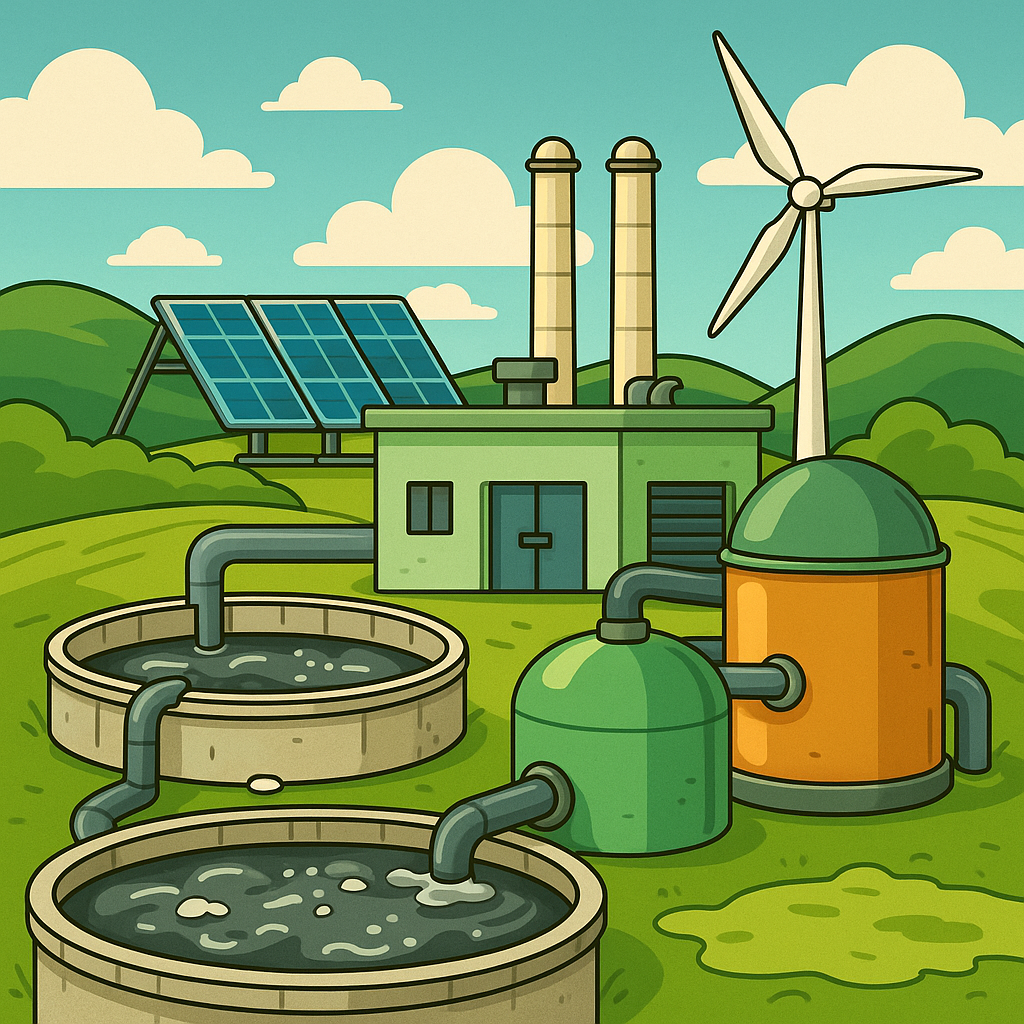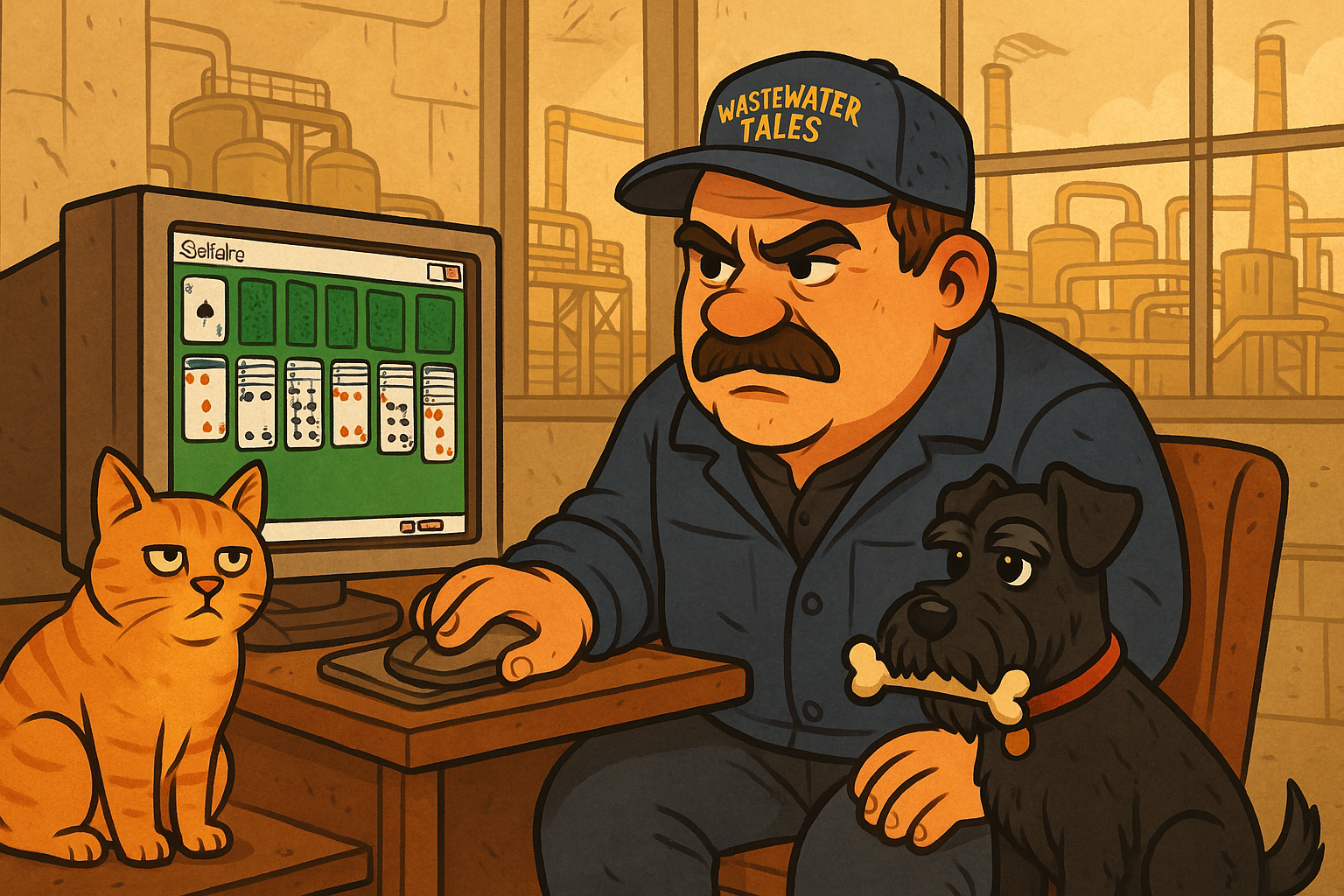Use of Renewable Energy Sources in Wastewater Treatment Plants
🌱 Use of Renewable Energy Sources in Wastewater Treatment Plants In 2025, renewable energy sources (RES) in the water and sewage sector are no longer just a trend—they have become a necessity. Rising energy prices, new environmental regulations, and the desire to become energy independent are driving more and more treatment plants to invest in renewable energy. And rightly so. 🔋 Why is this so important? Wastewater treatment plants consume enormous amounts of energy...
🔋 Why is this so important?
Wastewater treatment plants consume enormous amounts of energy—especially for sludge aeration, pumping, and automation. Up to 50% of operational costs are electricity bills. That’s why every kilowatt-hour from renewable sources is a step toward savings and energy independence.
☀️ 1. Photovoltaics (PV)
Instalacje PV montowane są na dachach hal technologicznych, budynkach socjalnych, a nawet w formie farm naziemnych. Najczęściej zasila się nimi:
- SCADA systems and automation,
- low-voltage blowers,
- lighting and control room servers.
Nowości 2025: falowniki z AI, magazyny energii (LiFePO₄), tryb off-grid w godzinach szczytu.
🌬️ 2. Wind Turbines
Used in treatment plants with large areas. Increasingly common are vertical-axis turbines (SAV, Darrieus), which operate at low wind speeds and are quiet. They can cover demand for blowers or emergency systems, for example.
Example: The wastewater treatment plant in Libiąż – 2 turbines of 10 kW each, producing energy for aerators and HVAC systems.
🔁 3. Biogas from Sludge Fermentation
Fermentation chambers produce methane biogas (CH₄), which powers CHP (combined heat and power) engines. A recent innovation is fuel cells (SOFC), offering higher efficiency. AI systems monitor fermentation temperature, volatile fatty acids (VFA), and pH levels.
🔥 4. Heat Pumps and Energy Recovery from Wastewater
Wastewater temperatures range from 12–20°C. Water-to-water heat pumps harness this potential to heat buildings, drying rooms, and even clarifiers. This significantly reduces the consumption of gas or grid electricity.
Example: ZWiK Kraków – heating an entire laboratory building and analysis station using heat pumps powered by wastewater effluent.
💡 5. Hybrid Renewable Energy Systems
The greatest potential lies in hybrid solutions: PV + wind turbines + biogas + energy storage + AI automation. Such systems enable full control of consumption, resilience to blackouts, and achieving energy self-sufficiency.
📊 Technology Comparison
| Technology | Benefits | Challenges |
|---|---|---|
| Photovoltaics | Do 25% oszczędności rocznej | Nighttime balance |
| Wind turbines | Reliable source of support | Space requirements |
| Biogas (CHP) | Heat energy + electricity | High fermentation costs |
| Heat pumps | Thermal self-sufficiency | Initial investment |
| Hybridization | Full energy control | Complex system integration |
Wastewater Tales – because wastewater can also work to generate its own energy. ♻️💧
How do you rate this story?
Click the star and rate Zdzichu!
Votes: 4 · Average: 5
No one has voted yet. Be the first!



